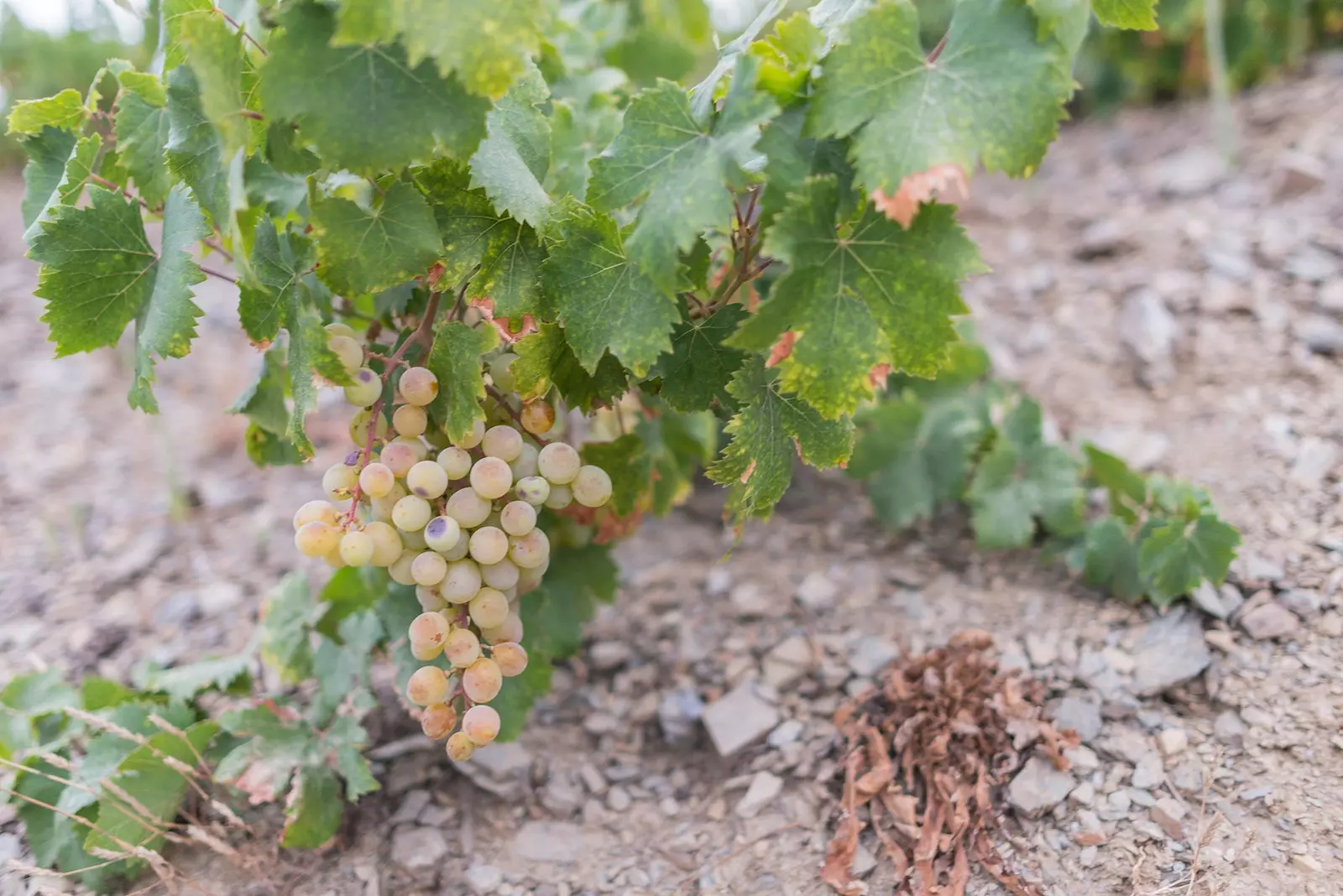
The favorite landscapes of wine travelers
They travel for work and are privileged witnesses of a nature that sometimes touches them, seduces them. And they decide to stay there, explore, learn They look with different eyes wine landscapes throughout Spain Y they tell stories in the form of wine . I ask them about their favorites, and this is what they tell me.
SCOTTISH WITH A MEDITERRANEAN TASTE
Norrel Robertson he is a Scotsman who calls himself "steering wheel" , a word that alludes to his constant transfers from one side of the peninsula to the other to make wines and that it is a translation of a somewhat outdated word that was used a lot in the 90s (what undervalued years, right?): flying Winemaker, which in Cañí became " flying winemaker ”, And with that he stayed.
Norrel has been in Spain for decades and makes his own wines here, in Aragon , but he also has other projects as a consultant in South Africa and collaborates with a cooperative in the ** modest region of Bullas **.
When I ask him he hesitates, but he chooses the latter: “ Bullas is a jewel of Murcia . Small, unknown, continental, with a elevated and curious vineyard for the monastrell ”, says the Scotsman from this small town who arrived with suitcase in hand to collaborate with the Rosary Cooperative and where he has fallen in love with a fresh monastrell, from the interior, with much of what the winegeeks : the minerality.
Reasons to explore it: its wine-growing landscape where the Monastrell dominates the territory; the Roman villa of Los Cantos , where remains of the activity that took place here between the 1st and 5th centuries ; the Wine Museum , Where is he "Boy of the Grapes" , a viticultural deity also from Roman times; its Roman past, its Templar reminiscences and the Order of Santiago.
what to drink : Rosario Wineries , the cooperative that Norrel Robertson works with, makes great Young Monastrell reds and with aging full of fruit and freshness and, in addition, at a great price, since many of them do not exceed 10 euros.

The cooperative of young Monastrell reds and fruit and freshness aging
THE TRAVELING ANTHROPOLOGIST
Telmo Rodriguez he is a traveler who makes wine, and who wants to get away from the idea of an itinerant winemaker. Because he is a winemaker , yes, but he qualifies his projects in places that were forgotten wine-producing when he arrived (such as the ** Bibei Valley ** or the Malaga Axarquia …) of a journey that has already lasted three decades.
“We abhor labels that do not respect places and the idea that we have made wines all over Spain. He has interested us especially in the Northwest and some 'accidents' like Malaga or Alicante ”. Telmo emphasizes that almost (or almost not) anthropological interest in the wine-growing landscapes where he makes wines. “ We go to the sites to get to know them and work, not to see if they fit us. We restore them because we believe that they must be taken care of, not because it becomes fashionable”.
In fact, it was after the arrival of Rodriguez and his Company when some of those places have begun to attract the attention of other processors, in some cases, such as Gredos or Valdeorras , to the point of being focus of high critic scores or from the landing of larger warehouses. But Telmo travels through Spain because he considers it to be the bomb (these are his words), huge in biodiversity and variety of landscapes, orientations, vineyards …
But I push him to tell me about one, and he names Valdeorras , that “I like it because it is spectacular” that area in front of the Bibei, on the border with the Ribeira Sacra.

Malaga Axarquia
In addition, to whet the appetite for travel, he adds that "we have chosen a mysterious area, which is not spectacular, but where we have impossible vineyards" and where they have just bought a country house. So his thing is travel, but They are trips where the stops are very, very long.
To Malaga Axarquia he says that the passion for wine brought them. One of the most important wines in history was the mountainwine and we wanted to recover that, we felt a kind of obligation, it hurt us that that muscatel was disappearing , he comments, and adds that they are still in the project despite the fact that “we have never won a dime”.
What to see: the Bibei valley, with its gorges and its spectacular canyon, with vineyards of vertigo. Stroll through the countryside and, if it's winter, ski in the only resort in Galicia, Cabeza de Manzaneda. As Ermidas, a 17th century monastery that seems “planted” in the middle of nature.
In Malaga, the Axarquia is a region to get lost in towns like Nerja or Rincón de la Victoria , which are its two best-known towns, or visit other much smaller ones, such as competa, where Telmo makes his wines, Salares, Sedella or the very white Árchez.

Vineyards in the Axarquia (Malaga)
What to drink: if you like the godello, One of the first wines that Telmo made here was Gaba do Xil, which is not a bad start to discover this grape in its freshest version. If the march goes to you, Falcoeira To Chapel , Rodríguez's red wine that comes from the first farm they bought in Bibei, is your wine.
In Malaga you have to take one of their sweet muscats. Rodríguez's, who rescues a elaboration inspired by the old mountain wines that were made in the area. Sweet MR, its younger version, is a good choice.
THE ATLANTIC WINELOVER
Alberto Orte is another restless mind that is traveling through Spain in search of unique vineyard landscapes.
With his partner Patrick Mata , this late winemaker (he began studying in 2006 after a professional career focused on importing Spanish wines into the United States) founded the ** Compañía de Vinos del Atlántico , where he explores territories and produces wines**, sometimes rescuing enclaves in danger of disappearing or little-known land in traditional wine-growing regions.
Orte, which already has wines in Valdeorras, Rías Baixas, and Cádiz, is also moving away from the Atlantic making a red with Monastrell in Yecla , a grape that I don't know if it could be more Mediterranean.
The fact is that Orte, when I ask him, stays with a Rioja Alta almost unheard of for more conventional Rioja drinkers.
Is about the southern area of Rioja Alta , a vineyard landscape in the foothills of the Demand Saw, a limit zone within the Denomination of Origin.

Vineyards at the foot of the Sierra de la Demanda
Here Orte falls in love a terrain of difficult access, with small wine farms that survive in an area that cannot be mechanized , of complicated cultivation, where you can still see old terraces that endured soil planted with vines, but that have ended up being lost.
From here, Orte prefers Grenache, that he elaborates in collaboration with a farmer, because, comments the oenologist, are fresh, difficult as the terrain and they need that which is often mentioned when talking about great wines: time, to grow in the bottle, polish, become seductive and bright.
That romantic vision with a point of decadence too led him to produce in Valdeorras, and also in the border area of this Denomination of Origin, right in the Bibei valley, bordering a wine-growing territory that already belongs to the Ribeira Sacra. A place full of lost vineyards to which the mountain has won the battle, but where some still survive, almost like irreducible heroes surrounded by the enemy.
What to see: I'm sure you won't get tired of strolling through the landscapes of Rioja vineyards, but if you also want to alternate with another type of route, Not far from Nájera is San Millán de la Cogolla, with the spectacular Monasteries of Suso and Yuso, which were the home of Gonzalo de Berceo, the poet, and symbols of the birth of the Castilian language. It's not far either the beautiful Ezcaray, where to stop to try Echaurren croquettes or ski in its nearby Valdezcaray.
What to drink: a red that vindicates its origin, Sierra de la Demanda, one of the wines produced by the Company in the area.

Through the streets of Ezcaray
